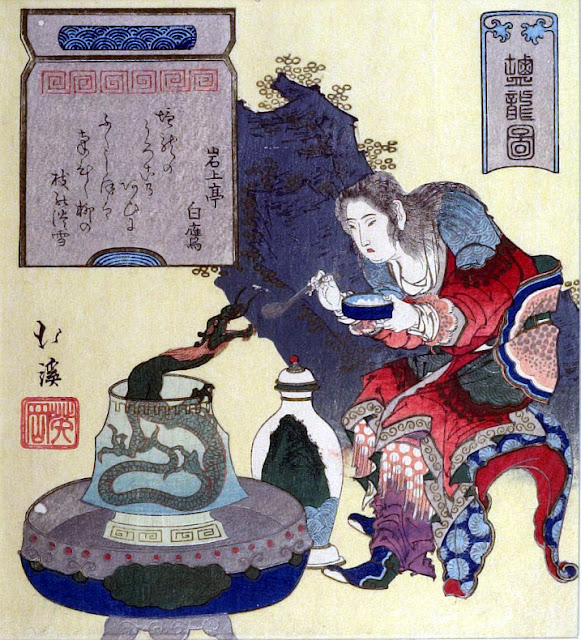 |
| Kaigetsudō Ando: Bijin and Attendant, 1710 |
Painter Kaigetsudō Ando (1671-1743) founded the Kaigetsudō school, and some of “his” works might very well have been painted by his disciples. He belongs to the few ukiyo-e artists who never made woodblock prints but restricted his work to paintings.
As many East Asian paintings, Bijin and Attendant is painted on silk. That gives the picture a special lustre.
The musical instrument is a shamisen. It has three strings and its closest western relative is the banjo.
As many East Asian paintings, Bijin and Attendant is painted on silk. That gives the picture a special lustre.
The musical instrument is a shamisen. It has three strings and its closest western relative is the banjo.





